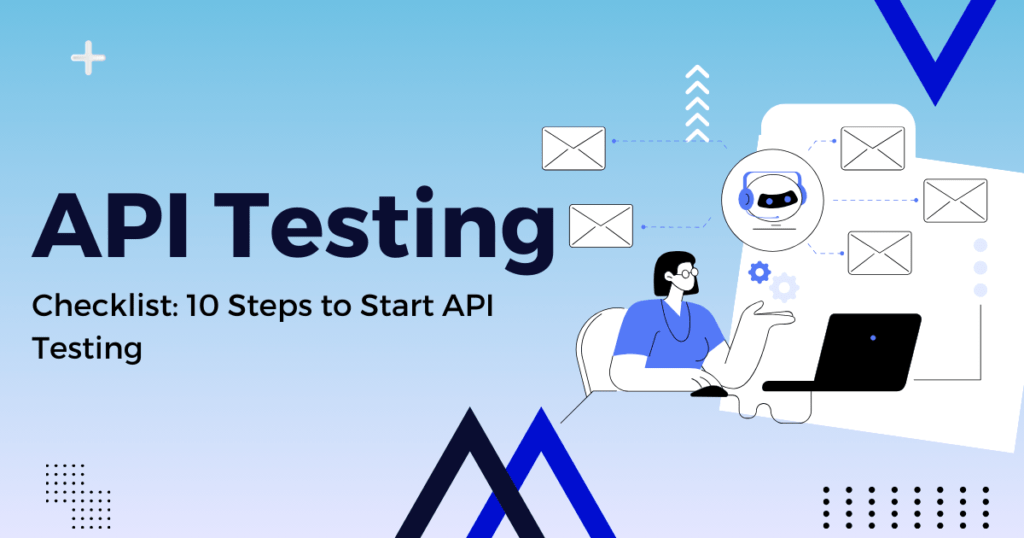API testing is an essential component of software development today. It ensures that your application program interfaces work correctly and efficiently. This checklist will help you get started with API testing checklist, whether you are new or just looking to improve your current process.
1. Understanding API Specifications
Understand the API specifications before you begin testing. Included are the endpoints (GET, POST PUT DELETE), methods of request (GET, POST PUT DELETE), parameters and expected responses.
- Review the documentation: Read and understand the API documentation that is provided by developers or third party services.
- Understanding Use Cases – Identify primary use cases, and how API is intended to used.
2. Set Up Your Testing Environment
Make sure you have a testing environment which is stable and appropriate, and reflects the production environment in as close a manner as possible.
- Stable Environment: Use an environment that is dedicated to testing in order to avoid conflict with production or development data.
- Configure access: Ensure you have all the permissions and tokens necessary to interact with API.
3. Select the Right Tools
Choose the right tools to meet your API testing requirements. Popular options include Postman SoapUI and JMeter.
- Tools with features such as automated testing, scripting and detailed reporting are ideal.
- Integrate the tools with your existing pipelines for development and CI/CD.
4. Create Test Cases
Test your API under various conditions by creating a variety of scenarios.
- Basic Functionality: Check the functionality of each API endpoint.
- Include edge cases, invalid input scenarios and other error handling scenarios.
- Performance: Create test cases for measuring performance metrics such as response time and throughput.
5. Automated Tests
Automating API testing is essential for efficiency and consistency. Automate repetitive tests using your chosen tools.
- Create scripts that automate API requests by validating responses and automating common API requests.
- Schedule Tests. Set up automated testing to run regularly or when code is changed.
6. Validate responses
Check that the API response is as expected. Check the status codes, body of response, headers and error messages.
- Status Codes: Check that API returns the correct status code for each request.
- Data Validation: Compare the content and structure of the response to the results expected.
7. Performance Testing
Test your API’s performance to make sure it can handle the expected load and stress.
- Load testing: Simulate large numbers of requests to test how well the API will perform under heavy traffic.
- Stress testing: Push API to its limits in order to identify bottlenecks and break points.
8. Security Testing
Test your API for security vulnerabilities and protect its data.
- Authentication: Check that the proper authentication mechanisms have been implemented.
- Authorization: Make sure users have only access to data and functionality they are allowed to use.
- Data protection: test for secure data transmission, storage and handling.
Ready to enhance your software quality and accelerate your time to market? Contact us today at sales@stelotechnology.com to request a customized quote for your business!
9. Monitor API Performance
Monitor your API in real time to ensure it is reliable and responsive.
- Monitor API performance using tools such as New Relic Datadog or Grafana.
- Set alerts to notify you of unusual behavior or performance degradation.
Review and Iterate
API testing is a continuous process. Review your results and tests regularly, and improve your coverage and effectiveness by iterating.
- Test Review: Review test cases and results periodically to identify areas of improvement.
- Feedback Loop: Integrate feedback from users and developers to improve your API testing strategy.
Wrapping up – API Testing Checklist
It can be overwhelming to begin API testing, but a structured approach will make it manageable and efficient. Understanding API specifications, choosing the appropriate tools and automating your tests will ensure that your APIs are robust and secure.
API testing is an ongoing process of adaptation and improvement. Keep up-to-date with the latest requirements and challenges by staying proactive and iterating your tests. This checklist will help you to confidently begin your API testing journey, and create more reliable and efficient software.


